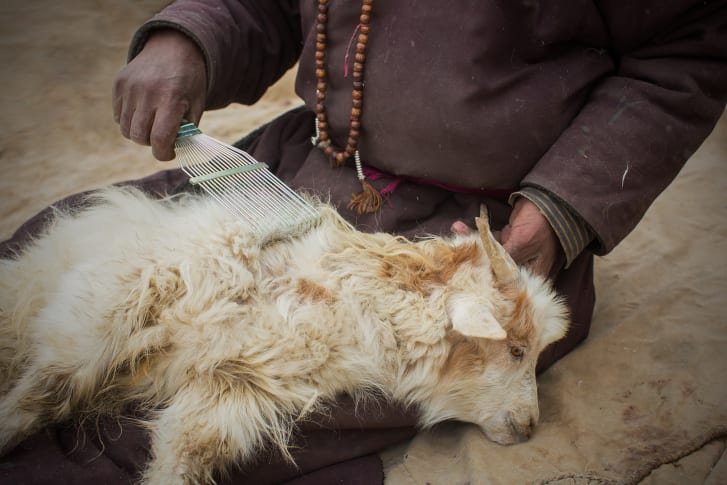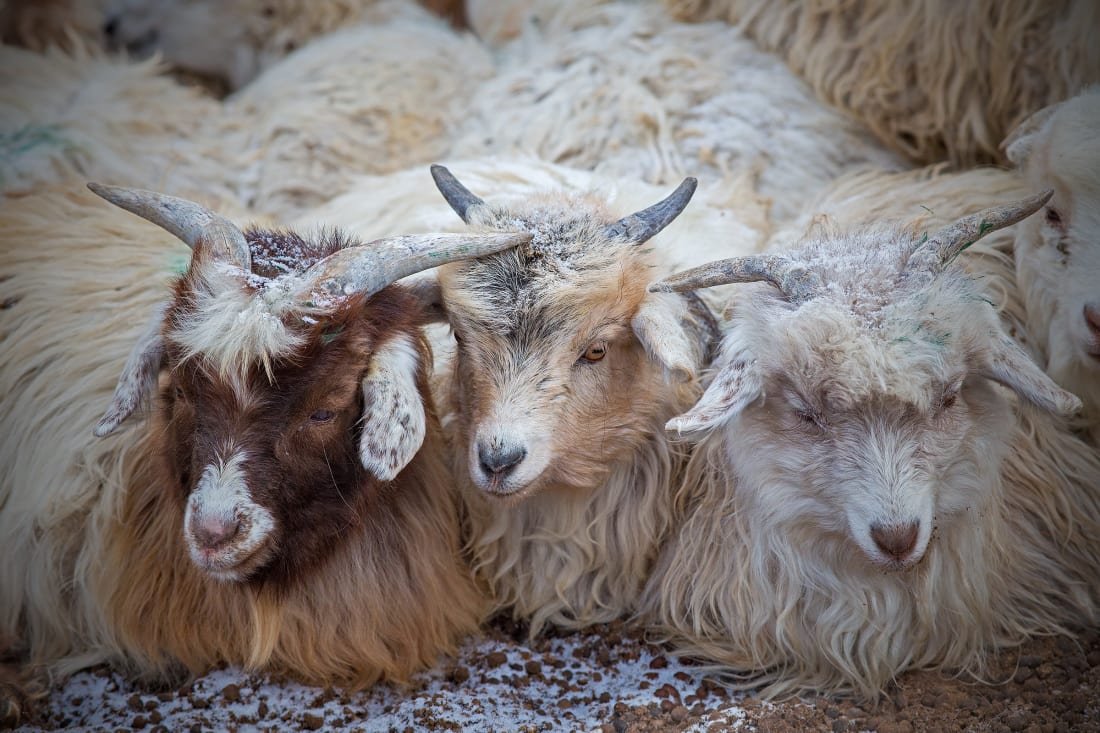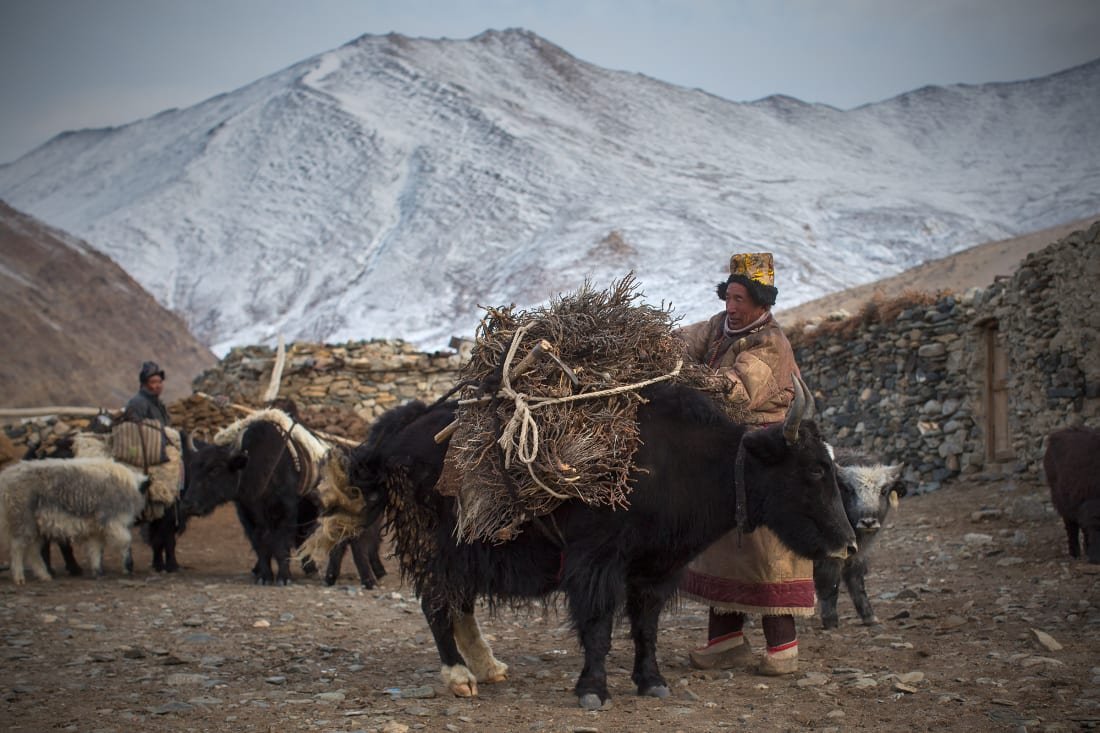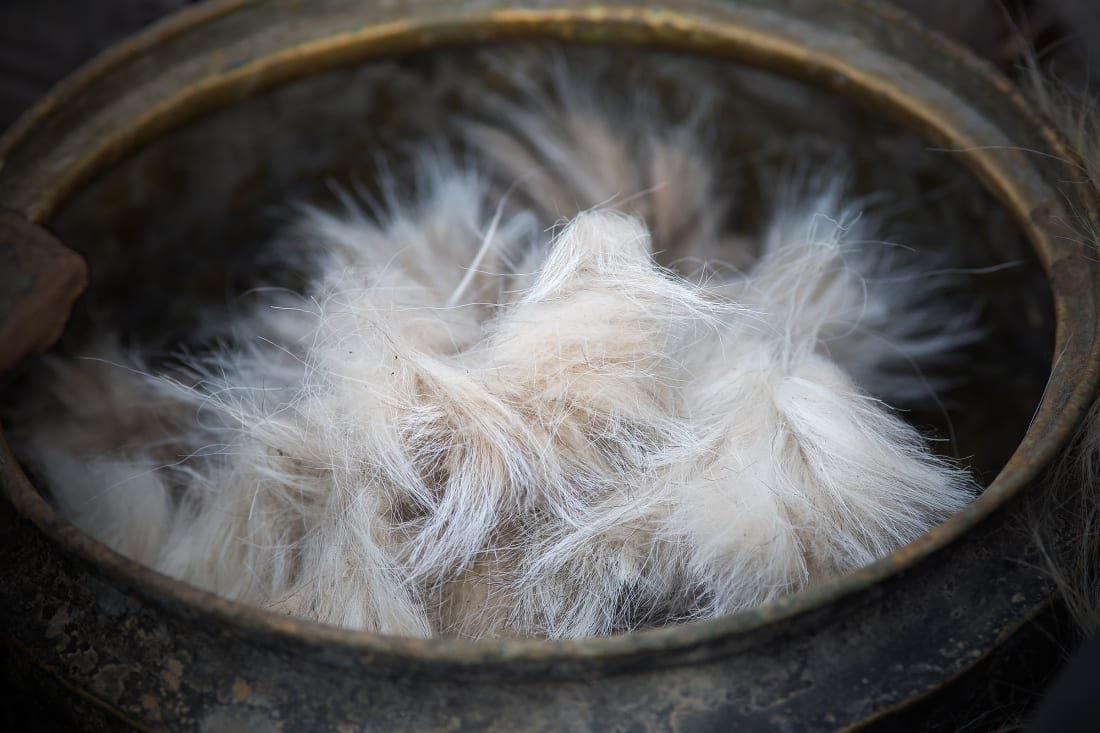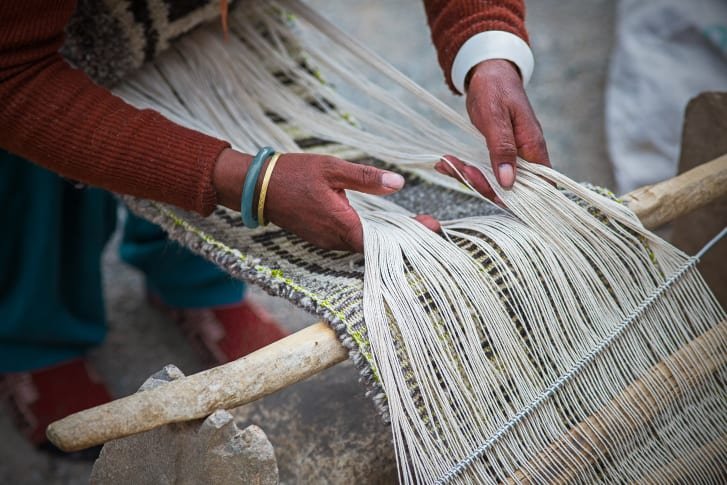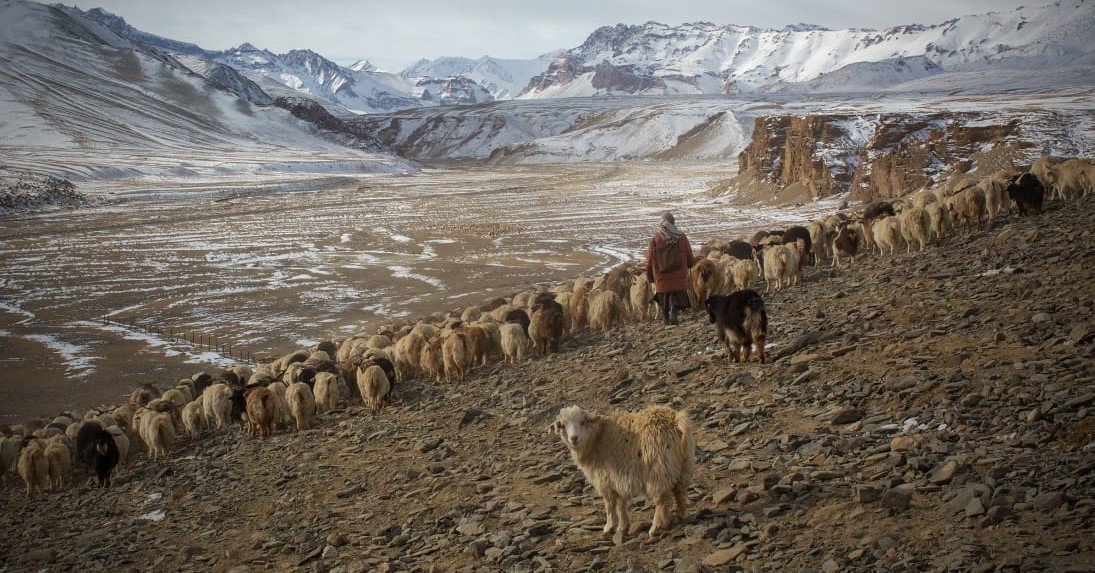 Each family has several hundred goats, all of which need to be moved separately so they don’t get mixed up in the Changthang plateau.–Andrew Newey
Each family has several hundred goats, all of which need to be moved separately so they don’t get mixed up in the Changthang plateau.–Andrew Newey
At an altitude of 5,000 metres (16,400 feet), it is hard to believe anyone, or anything can survive up in the vast ice desert of Changthang region straddling the Tibetan Plateau between India and China, where winter temperatures can fall to minus 40 degrees Fahrenheit, writes Andrew Newey, an award-winning British photographer after a recent trip to document the lives of Pashmina goat herders.
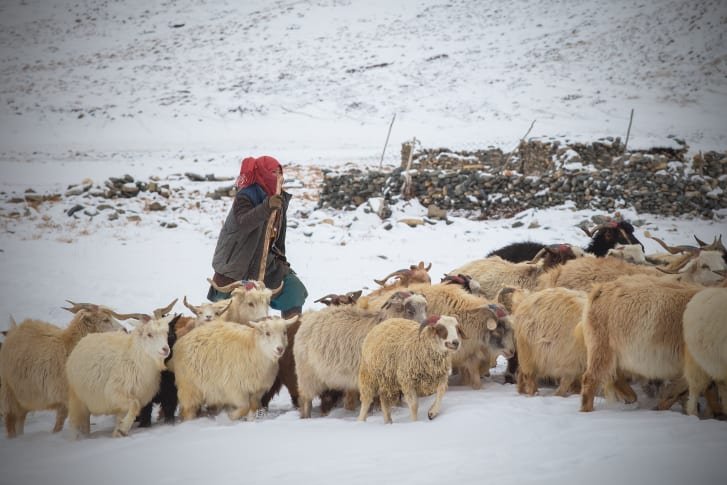
This and other factors have pushed many on the inhospitable plateau to abandon their traditions and migrate to villages and cities in the Ladakh region in search of alternative sources of income.

Pashmina wool
Pashmina, a highly coveted cashmere wool, comes from the fine undercoat of a breed of Himalayan goat found in India, Nepal, Tibet, Kasmir, northernmost Khyber-Pakhtunkhwa of Pakistan, Gilgit-Baltistan and Central Asia.
But the pashmina from Changtang is seen by purists as the best.
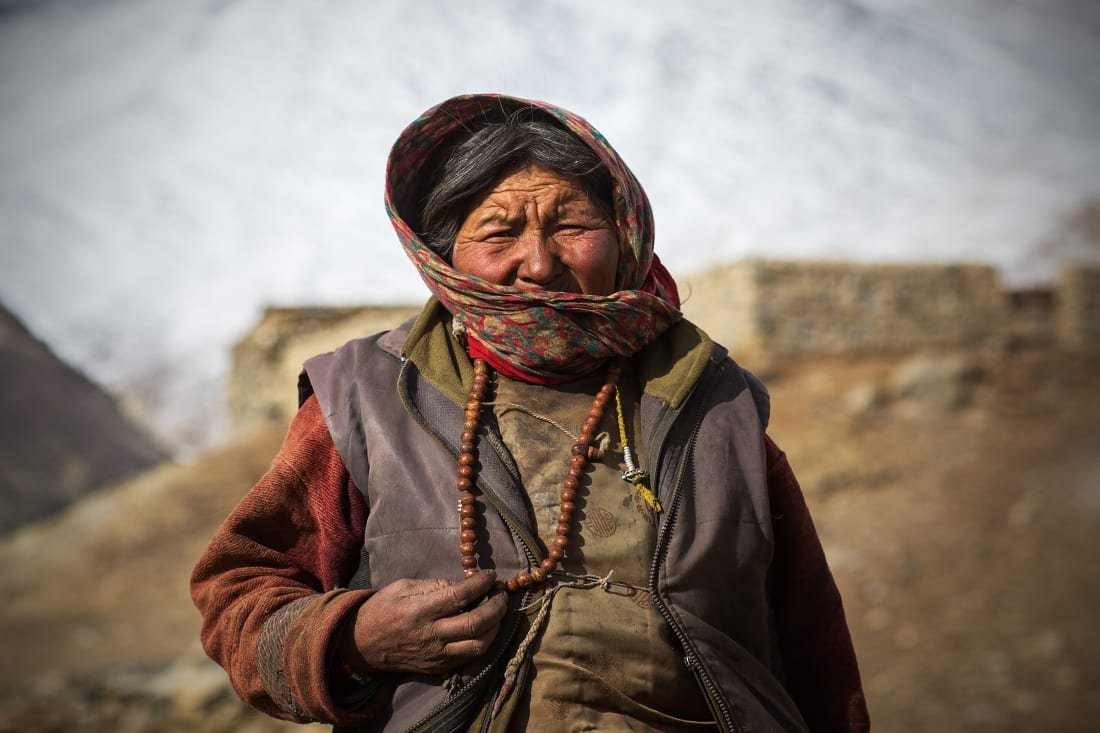
For this exceptionally warm, light and fine fibre, the animals need the particular climatic conditions of the Changpa’s homeland.
“During the period June to September we live in the camp inside tents but during the winter we have to shift to Korzok village because the weather gets too cold,” said Sonam Yangzom, 55.
“We will have to build a house in the camp because living in the tents is getting too cold,” she told AFP, her face weather-beaten after a lifetime in Changtang.
“We talk much more about the economic impacts of climate change… we need to look also at the social, cultural and environmental impacts such as the loss of culture, loss of language, loss of territory and loss of biodiversity.

Shopkeeper Irfan Goru, 31, said there were sometimes shortages of pashmina because of the changing weather.
“If the nomads of Ladakh do not produce it then nobody will… so this industry will finish,” he said.
ActionAid International activist Harjeet Singh said northern India is at the forefront of the ravages of climate change, suffering more droughts, floods, and cyclones.
“These impacts are driving migration. People are leaving their homes. And we have seen that their livelihoods change, their patterns of life change,” the 43-year-old told AFP.
“Right now at the international level, we talk much more about the economic impacts of climate change. But gradually people are realising that we need to look also at the social, cultural and environmental impacts such as the loss of culture, loss of language, loss of territory and loss of biodiversity.”
Fake Pashmina


The High Asia Herald is a member of High Asia Media Group — a window to High Asia and Central Asia

